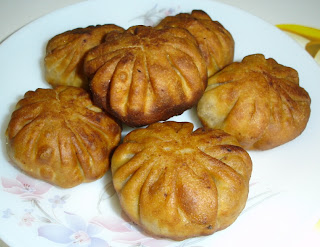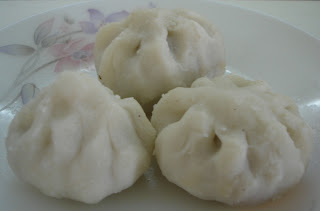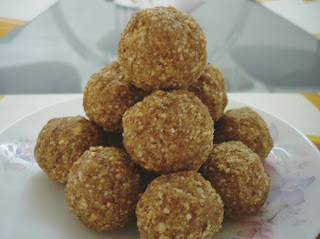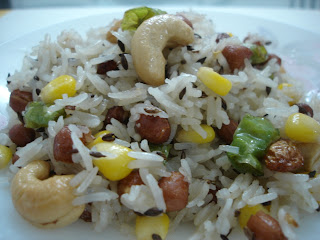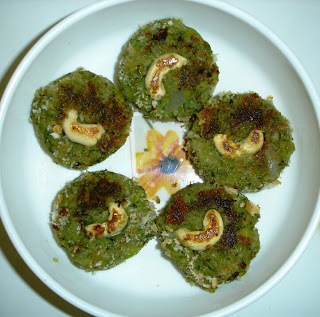Some of them were pretty elaborate like those relating to birth, marriage and death. Some seemed more like habits of someone with OCD like the way one had to clean one's hands before and after touching several things. The concepts of "Madi" and "Pathu" in a Tambrahm household needed the skills of a rocket scientist to unravel. For the uninitiated, Madi is when you had to be clean and pure to do certain things like cooking and pooja. This involved having a bath, often wetting your hair too and wearing clothes that have not been touched by anyone who is not practising Madi. Pathu is an extreme form of hygiene which meant not mixing cooked things with uncooked things. But it is not all that simple as it seems - the finer intricacies are mind boggling. Suffice it to say I always did something wrong and incurred the wrath of my grandmother whose madi and pathu I polluted.
As a teenager, I used to be fascinated by some of these practices and angry about the discriminatory ones. But whenever I questioned a tradition or a ritual the answer was the same:
"This is the way we have always done it in this family." If I persisted more I was told that I was going to make the Gods angry and they would pierce my eyes.
That was a powerful threat.And when I got married one of the important and repeated advices I received from my aunts and grandmother was:
"Don't be impertinent. Learn the practices in their house and follow them. Else it is your children who will suffer."
What?
The best part was that even though I married another TamBrahm there were so many subtle variations in the practices in their family and deviations were not tolerated. And when I asked my m-i-l for the rationale I got the answer:
"This is how we have always done it in this family." How enlightening!
And that is exactly how traditions and rituals get perpetuated - unquestioning obedience, irrational fear and blind faith. Once the ground is fertile with these nutrients it is easy for those wielding power to use these effectively to reap their benefit. So many practices still thrive around the world on the only excuse:
"We have always done it this way and we do not have to change." Remember the recent cases in Haryana where the Panchayat separated a couple and took away their children for they married within the same gotra? Remember our discussion here on the power of Horoscopes and defects in natal charts?
Female circumcision a.k.a female Genital Mutilation (FGM) has been in practice in many African countries for over 2000 years. It is still practiced in over 40 countries.It involves some very crude and dangerous methods done without medical assistance in many villages. This summer 2 girls died in Egypt after they were subjected to the procedure and there was an angry furore over this. The Egyptian health ministry banned the practice but the public reaction was that the ministry had no right to question a cultural tradition:
Osama Mohamed el-Moaseri, imam of a mosque in Basyoun, the city near where the 13-year-old girl lived, and died. “This practice has been passed down generation after generation, so it is natural that every person circumcises his daughter,” he said. “When Ali Gomaa says it is haram, he is criticizing the practice of our fathers and forefathers.”
Most parents fear that no man will marry an uncircumcised girl as it is a symbol of a woman's honour and chastity! You can read what WHO has to say on FGM here.
Such a dangerous and barbaric practice and yet people defend it on the grounds that this is how we have always done it in our community.
How come we abandon all reason, judgement and humanity when it comes to tradition and faith? Why is there a reluctance even to question it and understand it even from people who suffer under the weight of it?
Reminds me of a story a friend forwarded:
A group of scientists placed 5 monkeys in a cage and in the middle, a ladder with bananas on the top.Every time a monkey went up the ladder, the scientists soaked the rest of the monkeys with cold water. After a while, every time a monkey went up the ladder, the others beat up the one on the ladder.
After some time, no monkey dare to go up the ladder regardless of the temptation.
The scientists then decided to substitute one of the monkeys. The first thing that this new monkey did was to go up the ladder. Immediately the other monkeys beat him up.
After several beatings, the new member learned not to climb the ladder even though he never knew why.
A second monkey was substituted and the same occurred. the first monkey participated in beating the second. Soon all the monkeys were replaced.What was left was a group of 5 monkeys that even though never received a cold shower, continued to beat up any monkey who attempted to climb the ladder.
If it was possible to ask the monkeys why they would beat up all those who attempted to go up the ladder…..
I bet you the answer would be….
“I don’t know – that’s how things are done around here”
Does it sound familiar?
I agree that every culture has its own peculiar traditions but it is necessary for successive generations to evaluate them against external changes and see their relevance and usefulness. While I am all for preserving our culture and best traditions, it is important to throw out those that have outlived their purpose, those that have been proved unscientific and those that are repressive and barbaric. That things have "always" been that way is no excuse. Now is always a good time to throw them out and become a more humanistic society.
